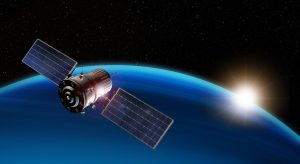In the rapidly evolving frontier of low-Earth orbit (LEO) satellite technology, the dominance once held by a few pioneering firms is now being tested by a new wave of competitors. What began as a niche endeavor in space communications has now transformed into a strategic, multi-national race to provide high-speed internet access, secure data services, and global coverage from above the atmosphere.
SpaceX’s Starlink, with over 5,500 satellites currently in orbit, remains the most established and expansive low-Earth-orbit (LEO) constellation. However, its first-mover advantage is under pressure from emerging players, including Amazon’s Project Kuiper, the U.K.-based OneWeb, China’s Guowang constellation, and a range of private-sector and government-backed initiatives across Europe, India, and the Middle East.
Market Shifts and New Entrants
Amazon’s Project Kuiper launched its first two prototype satellites in late 2023, aiming to deploy over 3,200 satellites by 2029. Backed by Jeff Bezos, the initiative represents a direct challenge to Starlink’s dominance. Amazon plans to begin customer pilots by 2026, with major investments in terrestrial infrastructure to support global connectivity.
Meanwhile, OneWeb, recently merged with Eutelsat, has accelerated its launch cadence and now boasts more than 600 satellites in orbit. OneWeb’s focus is less on consumer broadband and more on enterprise, aviation, and maritime markets. Its partnership with governments and telecommunications providers globally positions it as a key strategic alternative to SpaceX.
China’s state-backed Guowang network has ambitions to deploy a constellation of up to 13,000 LEO satellites, potentially rivaling Starlink in scale. While its transparency and interoperability with global networks are limited, its geopolitical implications are profound. According to the Center for Strategic and International Studies (CSIS), China’s push into LEO is not only commercial but also military-strategic, seeking to reduce reliance on Western-controlled infrastructure.
Why LEO Matters
Unlike traditional geostationary satellites, which orbit at an altitude of 35,786 kilometers above Earth, LEO satellites operate at altitudes ranging from 300 to 2,000 kilometers. This proximity offers significantly lower latency, making LEO ideal for real-time applications like video conferencing, autonomous vehicles, and cloud computing.
Moreover, the growing demand for universal internet access—particularly in underserved and rural regions—has elevated LEO constellations as critical infrastructure. With more than 2.7 billion people still offline as of 2023, according to the International Telecommunication Union, the promise of global broadband coverage is both a commercial opportunity and a public policy imperative.
Despite the rapid progress, significant hurdles remain:
-
Space Debris: With tens of thousands of satellites projected for launch in the next decade, the risk of collisions and orbital debris is growing. Organizations like the European Space Agency (ESA) are calling for tighter regulations and protocols for satellite deorbiting.
-
Spectrum Allocation: With multiple constellations competing for radio frequencies, spectrum congestion and coordination pose significant challenges, particularly in the absence of harmonized global regulations.
-
Economic Viability: Many LEO initiatives require billions in upfront capital and may take years to become profitable. Questions persist about whether markets—particularly in low-income regions—can support the cost structures associated with satellite broadband.
The Role of Government and Regulation
National and international agencies are increasingly stepping in to mediate this high-stakes race. In the United States, the Federal Communications Commission (FCC) has tightened regulations for orbital debris mitigation and accelerated licensing procedures. Globally, the International Telecommunication Union (ITU) continues to play a crucial role in coordinating orbital slots and spectrum, although enforcement remains a challenge.
Meanwhile, the European Union’s IRIS² initiative—a €6 billion public-private partnership aimed at developing sovereign satellite connectivity—reflects growing concerns over dependency on foreign infrastructure and a desire to assert digital sovereignty in orbit.
The LEO satellite race is not just a technological competition—it is a reshaping of the digital map. As more players enter orbit, the balance of power in global communications infrastructure is shifting. What was once the domain of visionary entrepreneurs and cutting-edge science is now a geopolitical and economic arena.
The incumbents may have a head start, but the race is far from over. With new entrants backed by massive capital, strategic alliances, and technological innovation, the contest for control of low-Earth orbit is intensifying—ushering in a new era of space-based connectivity and competition.



